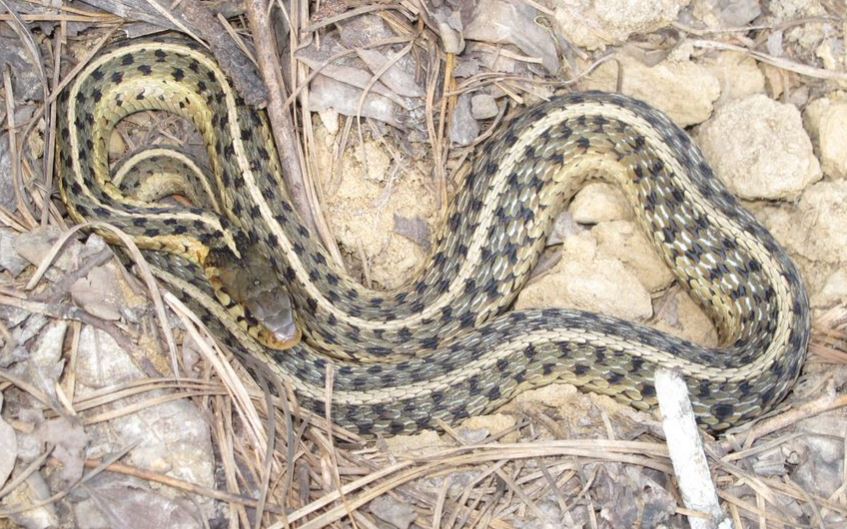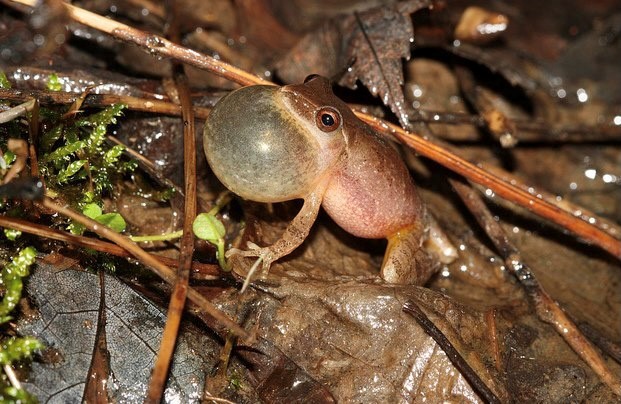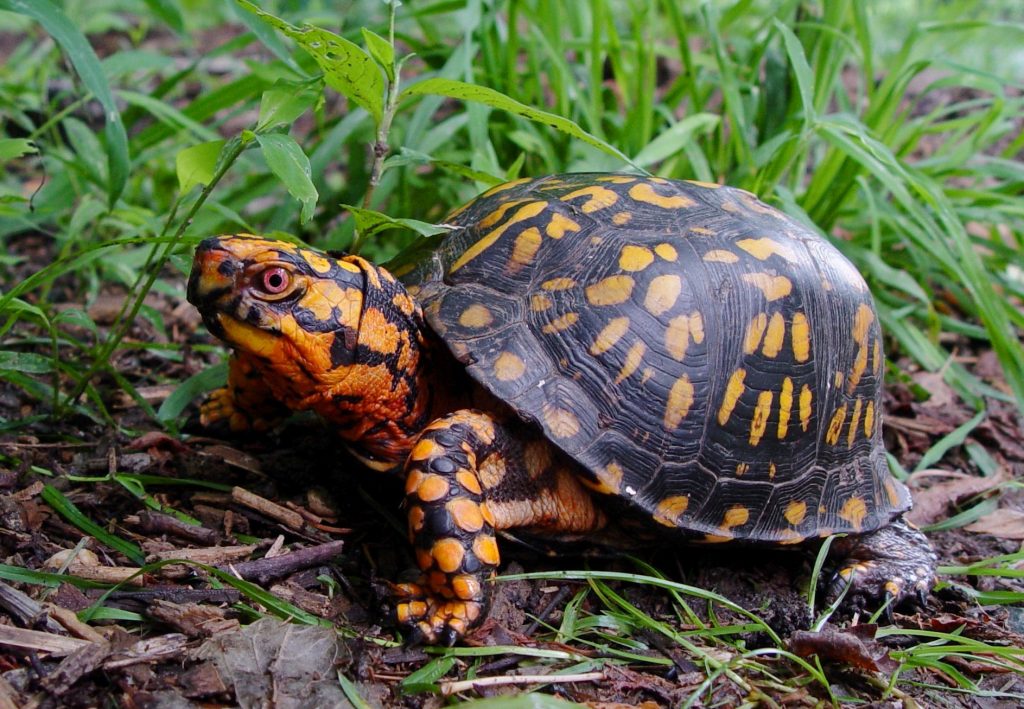Outdoor Delaware is the award-winning online magazine of the Delaware Department of Natural Resources and Environmental Control. Articles and multimedia content are produced by the DNREC Office of Communications.
As anyone who’s searched for them knows, finding snakes, turtles, frogs and other reptiles or amphibians isn’t always easy. For conservationists, who must develop detailed plans around propagating species that are typically rare to begin with, it can be even more difficult. Experts have too often lacked good data about these critters, including where exactly they live. Mapping the range of every species in our state is a very big task.

But, thanks to a very extensive project that took the better part of a decade, the Delaware Department of Natural Resources and Environmental Control now has a better idea about the location of reptiles and amphibians here.
From 2018 to 2023, wildlife experts and a small group of trained volunteers carefully looked for herps (short for herptiles, which simply refers to reptiles and amphibians) on public lands around the state. Staff from the DNREC Division of Fish and Wildlife also made use of citizen science tools like the online databases HerpMapper and iNaturalist, which allow people to report herp sightings.
“Basically, the purpose of this was to establish a baseline of data so in future years we could make comparisons, because prior to this we didn’t have data at this resolution, essentially at this fine scale,” Dr. Nathan Nazdrowicz, the Division of Fish and Wildlife’s herpetologist, said.
In all, Delaware experts and trained volunteers made 4,483 sightings, while 2,588 observations came from HerpMapper and iNaturalist contributed another 4,214. A total of 62 different herp species were documented in the First State, with 54 in New Castle County, 46 in Kent County and 54 in Sussex County. (A few herp species that have previously been observed in Delaware, such as the scarlet snake, the plain-belled water snake and a few types of sea turtle were not documented during the designated period.)
The team used a grid system to divide the state’s land area into 260 blocks of about 10 square miles each, with a goal of observing 15 species of reptile or amphibian in each block. One hundred seventy-one, or almost 66%, ended up meeting that goal, while 215, or about 83%, had at least 10 different herp species.
Only eight blocks, all of which were along the coast and mostly consisted of saltmarsh and open water habitats, had no observed species.
About half of the blocks that did not meet the threshold of 15 species fell on the state border or coast, with many of those lying largely outside Delaware or containing a significant percentage of saltmarsh and open water habitats. Blocks consisting entirely of Delaware land that did fell short of the goal often had little public land available to survey and agricultural landscapes offering little in the way of natural habitats.

“We collected some good data on species that previously were almost entirely lacking data within the state,” Nazdrowicz said, noting there were few findings that could be characterized as genuinely surprising. Anecdotally, no large declines were observed, which is a good sign.
The results will be used to focus conservation efforts on specific areas, particularly those now known to house species of greatest conservation need like the tiger salamander, eastern box turtle or Cope’s gray treefrog.
Some species have clearly expanded their range, Nazdrowicz said, pointing to several types of treefrog as having reached farther north in Delaware in recent years. That can be partially attributed to climate change, which for the treefrogs actually can be a good thing, as warming temperatures make more habitat suitable for them.
Nazdrowicz did note the survey also determined some species thought to be statewide were found to be more restricted, such as the eastern ribbon snake and eastern mud turtle, which were observed mostly along the coast.
He expects the division will want to repeat this initiative again in about 20 years so it can compare results and look for trends, chiefly whether the number of observations grows or declines.
The most diversity any block had was in southwestern New Castle County, where 35 different species were observed. Fourteen species — eight frogs, three turtles, two snakes and one salamander — were found in at least half the blocks, with the most common being the spring peeper at 229, or 88%.
Thirteen non-native species were observed, by far the most common of which was the red-eared slider, spotted in 63 blocks, or 24%. Other non-native species include an American alligator, a ball python and a green iguana, each of which were likely exotic pets that escaped or were released.

Most of these species are unsuited for the climate here and cannot survive Delaware’s cold winters, though tiny populations of Mediterranean geckos have been established here since the early 2000s. Small lizards like this might arrive in the state by way of plants or building materials shipped to Delaware from a more temperate location.
The herp atlas project was in some respects modeled after prior breeding bird surveys conducted in Delaware. It also took advantage of a similar herp investigation in Maryland a few years prior, with the Division of Fish and Wildlife enlisting some volunteers who participated in that initiative.
While the project provided a great deal of useful information for Nazdrowicz and his team, there’s one question that remains unanswered. Delaware has yet to name a distinctive herp it can call its own the way we can boast of the blue hen and horseshoe crab being the state bird and marine animal, respectively.
Eastern box turtles are recognizable and not uncommon here, while the state does have potentially the best tiger salamander population in the region. But which should be named the state herp?
“That’s not something for me to decide,” Nazdrowicz said.
Regardless, Delaware naturalists will remain dedicated to documenting and preserving all sorts of species within our state.
Editor’s note: A version of this article appeared in the spring 2019 issue of Outdoor Delaware and was updated in 2025.
Related Topics: adventure, animals, conservation, education, fun, health, nature, outdoor delaware, reptiles, science